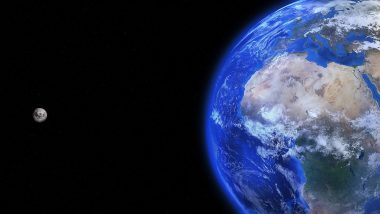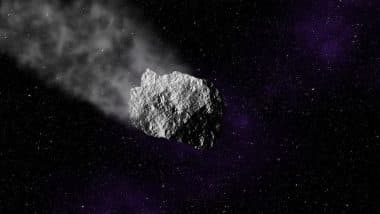Earth, even though for a short period of time, is about to gain a new “mini-moon” as a small asteroid named 2024 PT5. This asteroid is set to be captured by the planet’s gravity for a brief tenure. Starting from September 29 and lasting till November 25, this asteroid will circle Earth before continuing its journey through space, as stated by researchers Carlos and Raúl de la Fuente Marcos from Universidad Complutense de Madrid. Discovered on August 7, 2024, this asteroid measures approximately 10 metres (33 feet) in diametre.
The asteroid 2024 PT5 was discovered through the Asteroid Terrestrial-Impact Last Alert System (ATLAS). Researchers have noted its size, speed, and trajectory, which make it suitable for temporary capture by Earth’s gravitational field. Notably, this asteroid will orbit the Earth for 53 days before breaking free and resuming its solar path. In their paper published in Research Notes of the American Astronomical Society, the researchers stated, “2024 PT5 will circle the Earth one time before it escapes back into space.” This event, known as a "temporarily captured flyby," occurs when an asteroid enters Earth's gravity but doesn’t complete multiple orbits. Asteroid Funny Memes and Jokes: Hilarious Reactions, Witty Posts and Photos That Aptly Describe the Near-Miss Space Rocks.
Such events have also been witnessed in the past. In 2006, an asteroid circled the Earth for almost a year, while another remained in Earth's orbit for several years before leaving in 2020. These occurrences are part of a larger phenomenon, where Earth occasionally captures small asteroids from the Near-Earth Object (NEO) population.
Will ‘Mini-Moon’ Visible to Naked Eyes?
Asteroid 2024 PT5 will be too dim and faint to be observed with naked eyes or small telescopes. It has a brightness of magnitude 22 which makes it visible only through advanced observatories.
Notably, asteroids like 2024 PT5 typically follow paths known as “horseshoe orbits,” named for the shapes these orbits take as they revolve around both the Earth and the Sun. Owing to their low speeds, they are sometimes captured temporarily by Earth’s gravity. However, most of these mini-moons do not complete a full orbit around the planet before escaping back into space.
How Is ‘Mini Moon’ Connected to Mahabharata?
Moreover, researchers are intrigued by the potential origins of 2024 PT5. They suggest that it may come from the Arjuna asteroid group, known for their orbits around the Sun that closely resemble Earth's. The asteroid’s trajectory aligns with other natural objects in space, ruling out the possibility that it is human-made space debris.
Notably, the ‘Arjuna’ asteroid group is a distinctive cluster of asteroids within the solar system. The name dates back to 1991, when astronomer Robert H. McNaught discovered an asteroid, 1991 VG, at the Siding Spring Observatory in Australia on November 1 of the same year. McNaught chose the name ‘Arjuna’ after being inspired by the heroic figure in the Hindi epic Mahabharata, which was later officially recognised by the International Astronomical Union (IAU).
In Hindu mythology, Arjuna is celebrated for his courage, exceptional archery, and wisdom. The name symbolises the asteroid’s swift and rapid movement through the solar system, much like Arjuna’s swift arrows, as well as its unpredictable path.
Mini-moons such as 2024 PT5 have captured the interest in the expanding fields of asteroid mining and space exploration. Due to their proximity and accessibility, they present ideal targets for future missions focused on studying or harvesting resources from asteroids.
(The above story first appeared on LatestLY on Sep 17, 2024 03:01 PM IST. For more news and updates on politics, world, sports, entertainment and lifestyle, log on to our website latestly.com).













 Quickly
Quickly





















